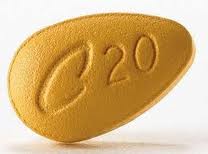The correct and efficient assessment of male patients presenting with sexual dysfunction depends upon a thorough understanding of the anatomical and the physiologic bases of human male sexual function and dysfunction, as described in Parts I and II. The next step in the evaluation process requires the physician to substantiate all theoretical assumptions of any potential diagnoses, both with hard data obtained via laboratory testing and through communicated data from the patient that will be interpreted on the basis of clinical experience, including information obtained from other health care providers such as diabetologists, cardiologists, oncologists, and psychologists that may be involved in the patient’s care. Due to the particularly sensitive and personal nature of sexual dysfunction for many men, adroitness and compassion must be exercised during these next crucial proceedings. It must be emphasized that a detailed medical history and physical exam, elicited in a thorough and sympathetic manner, are extremely helpful in targeting the underlying cause of the sexual dysfunction, as these will reduce the need to subject the patient to additional stressful, invasive, and costly investigations, particularly when a high index of suspicion has already been raised due to the presence of preexisting comorbid conditions (e.g., elderly patients or those with established diabetes, neurologic disorders, hypertension, and hypercholesterolemia). Questions targeted toward elucidating past psychological and sexual histories can further delineate the need for specific therapeutic interventions. Similarly, portions of the physical exam may provide readily obtained, invaluable information, such as the visual and tactile examination of the genitals and the assessment of the penile-brachial index and bulbocavernosus reflex.
Generally, erectile dysfunction (ED) is the most common presenting complaint, and this may be classified as having a psychogenic, organic, or a mixed etiology. Of the organic pathologies, these are most often related to vascular or neurological defects, although a combination of these may occur in the same patient— particularly in the presence of other concomitant systemic diseases, in which case endocrine factors may also be causative. The widespread availability and efficacy of agents specifically targeted to the erectogenic mechanism, such as intrapenile vasoactive drugs (e.g., prostaglandin E1) and oral phosphodiesterase- 5 (PDE-5) inhibitors – viagra Australia online, however, tempts many treating physicians to use them as primary therapeutic modalities without necessarily determining the specific nature of an individual’s sexual dysfunction. Although this approach may be suitable for the majority of patients who indeed have defects limited to the vascular components of the erectile mechanism, it must be remembered that the potential complications of using erectogenic drugs when contraindicated could be life-threatening, such as when PDE-5 inhibitors are inadvertently administered with nitrates.
Further indicating the need to perform the appropriate investigations:
- is the existence of the subset of men with potentially correctable disorders (e.g., psychosexual problems, hypogonadism, treatable chronic illness, and/or correctable vascular insufficiency),
- as well as those who have a high risk for complications or cannot tolerate the side effects of erectogenic agents (e.g., with PDE-5: headache, dyspepsia, changes in vision hue or sudden decrease or loss of vision; with intraurethral prostaglandin: systemic symptoms; with intrapenile vasoactive injections: penile priapism, pain, or fibrosis).
The chapters in Part III detail the methods of history-taking, conducting an appropriate physical exam, and the various office, laboratory, and other special investigations that may be performed in order to elucidate the particular nature of the sexual dysfunction.
Real-time penile tumescence monitoring can be achieved in the clinic with the use of a electrobioimpedance device, with or without concomitant administration of cavernosal vasodilatory agents or audio-visual sexual stimulation, and may be helpful in establishing or ruling out psychogenic etiology. Noc turnal penile tumescence monitoring can also be performed, but since the advent of daytime, officebased monitoring, the high level of time involvement and the cost associated with performing sleep studies often make them prohibitive for a typical patient workup.
Pharmaco-penile duplex ultrasound (PPDU) is a method that is capable of defining the arterial tree, measuring the diameter of the cavernosal arteries, and determining peak systolic flow, as well as revealing any abnormalities of the tunica albuginea. Intracorporeal injection of the vasodilator, papaverine, with or without alpha-adrenergic blockers (phentolamine or phenoxybenzamine) during PPDU may serve as an adjunct in helping to distinguish arterial from non-arterial causes of impotence. If needed, the exact location and extent of the vascular lesion can then be defined with more invasive tests. Penile arteriography is the definitive diagnostic procedure for assessing obstructive penile arterial flow. Cavernosography, on the other hand, is most helpful in assessing cavernosal body morphology and penile venous system drainage. Radioisotope techniques for assessing penile blood flow have also been developed. Available data suggest their usefulness in evaluating overall organ blood flow, particularly postoperatively. It must be noted, however, that the most invasive of these methods should not be considered as part of the routine investigation of the ED patient, and their use must be restricted to well-defined indications.,
Patients suspected of having neurologic impairment after the results of non-invasive office-based testing such as vibratory stimulation or thermal sensitivity have been obtained, or those with documented abnormal NPT, may be evaluated for pudendal nerve (somatic) conduction. More invasive testing of penile innervation includes perineal electromyography, sacral latency, and genital cerebral evoked response studies. These specialized tests have the advantage of localizing the specific site of neurologic sensory impairments. Currently, there is no direct objective procedure for evaluation of the parasympathetic innervation to corporeal blood vessels; however, cystometrography and bethanechol supersensitivity testing, via assessment of the vesical parasympathetic innervation, provide indirect information and are useful in patients with a concomitant voiding dysfunction. Similarly, indirect tests of the sympathetic nervous system, such as darkness pupil-size adaptation, sympathetic skin response, histamine/acetylcholine skin tests, or electromyography of the corpus cavernosum, may be useful in selected patients.
 One, perhaps common misconception about erectile dysfunction drugs is that it will increase a man’s desire to have sex. This is not the case; it will not cure or increase a man’s sexual desire. It will, however, allow a man to attain an erection if he is sexually stimulated or aroused.
One, perhaps common misconception about erectile dysfunction drugs is that it will increase a man’s desire to have sex. This is not the case; it will not cure or increase a man’s sexual desire. It will, however, allow a man to attain an erection if he is sexually stimulated or aroused.

